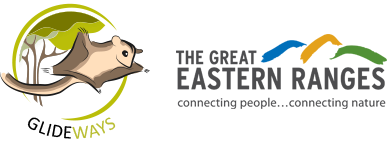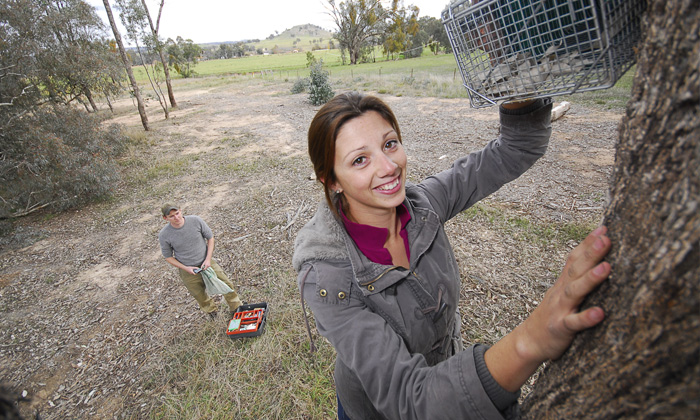National parks and remote areas are often viewed as the stronghold of gliders in eastern Australia, but in many places the marsupials live ‘whiskers to cheek’ alongside major urban centres like Melbourne, Albury, Wollongong, Taralga, Gosford and Brisbane.
Many of these landscapes, particularly those near regional centres and along the urban fringe, are under increasing pressure from development, roads and land clearing. These areas often occur alongside extensive areas of natural bushland which serve as important habitat for native plants and animals.
According to Dr Rodney van der Ree, Deputy Director of the Australian Research Centre for Urban Ecology (ARCUE) in Melbourne, rates of development are outpacing our understanding of how to best manage species to ensure their long-term survival.
“Research suggests that increasing landscape connectivity through the creation of wildlife corridors is one of the best method we have at our disposal,” says Dr van der Ree.
“Yet, very few studies have investigated the influence of urban developments on functional connectivity for wildlife, and the success of popular ‘greenway’ or ‘bio-link’ programs are largely untested.”
As part of the effort to conserve wildlife in an increasingly crowded landscape, the K2W Glideways team has built a collaborative partnership with a range of key organisations to research the importance of increasing connectivity for wildlife in human-dominated landscapes.
The team comprises researchers from ARCUE, Taronga Zoo, Deakin University, Gosford and Lake Macquarie councils, and partner organisations involved in the Great Eastern Ranges Initiative (GER) in Victoria, New South Wales and Queensland.
“Our research will explore key questions about connectivity, primarily the degree to which landscape features such as roads, backyard trees and remnant habitat, impede or enable functional connectivity for wildlife and how this is influenced by the surrounding landscape,” says ARCUE’s Post Doctoral Fellow, Dr Kylie Soanes.
“It will also aim to determine the extent to which increasing connectivity will conserve wildlife in urban environments relative to other management actions, and whether this differs between types of landscape.”
The innovative study will help to plug the current gap in knowledge about how urban landscapes affect wildlife connectivity. Kylie says that currently management of connectivity in these areas is based largely on models, expert opinion and studies conducted in rural landscapes. While urban and rural landscapes share many common features, the areas of ‘non-habitat’ surrounding them are vastly different which could mean that lessons learned in the country do not hold up well in the city.
“The study will focus on up to six species with varying capacity’s to move between areas. Genetic material from live animals will be used to develop a better understanding of the impact that different landscape features have on functional connectivity. We will then assess the consequences of this and compare the importance of connecting habitat with other management actions. Our findings will enable us to develop a generalised framework for connectivity planning that more accurately reflects the response of wildlife to highly fragmented landscapes,” says Kylie.
“We expect that many assumptions about the way in which urban landscape features affect wildlife movement and survival will prove to be incorrect, and that the importance of the matrix in conservation planning has been largely underestimated.”
“We want to ensure that restoration and management works are indeed occurring where the need is greatest, that their success can be properly evaluated and more importantly, that managers are taking the most effective actions to maintain viable populations,” Kylie concludes.
The team is currently seeking funding from the Australian Research Council through the Linkage Projects scheme to support the project, building on considerable work by landholders, community groups and conservation organisations to restore glider habitat across their range.
People interested in finding out more about the project can contact Dr Kylie Soanes at ksoanes@unimelb.edu.au

